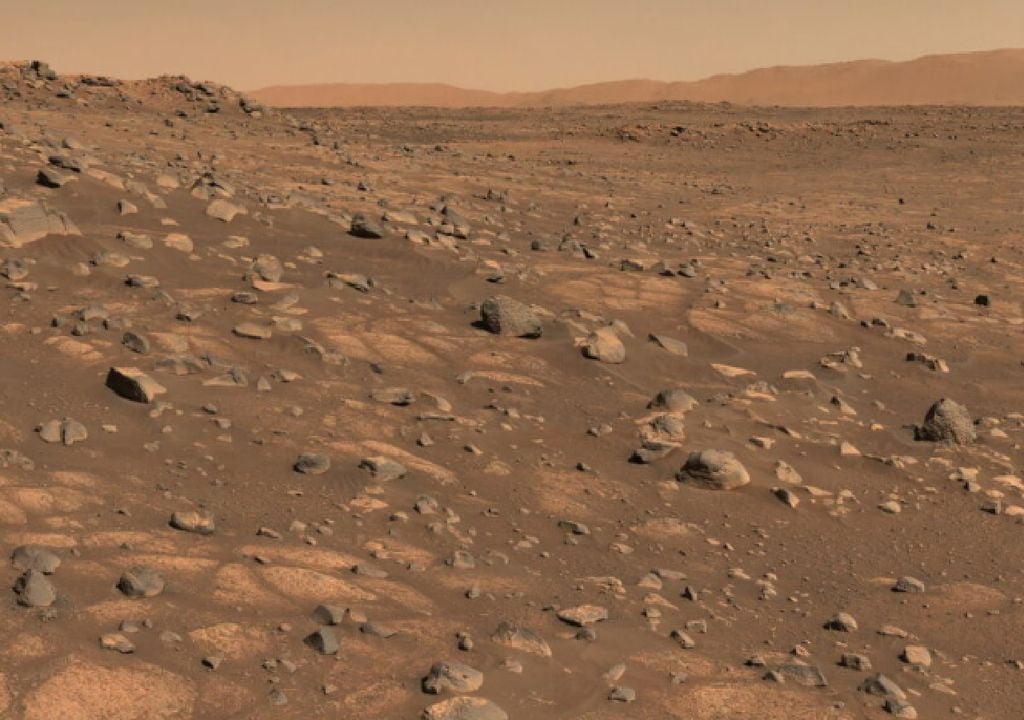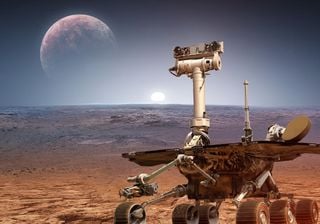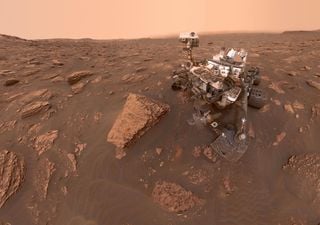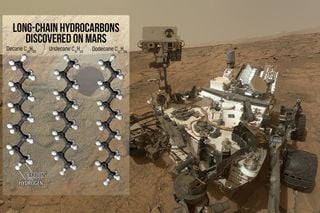Something Never Seen Before on Mars: Perseverance Records a Martian Dust Devil "Devouring" Another
In the NASA video, featuring images taken by the Perseverance rover, one Martian dust devil can be seen swallowing another.

The six-wheeled explorer, Perseverance rover, a robotic vehicle designed and built by NASA to explore Mars' Jezero Crater, recently captured images of multiple dust devils spinning along the crater’s edge. Below you can watch the video from the official X account of NASA’s Perseverance Rover, where a Martian dust devil "devours" a smaller one.
These dust devils may look strong, but not to worry: In the thin atmosphere of Mars, it feels more like a gust of wind.
— NASA's Perseverance Mars Rover (@NASAPersevere) April 3, 2025
Studying these phenomena can teach my team about the Martian climate: https://t.co/ilmSSfkh4U pic.twitter.com/azI0wcqrez
Never-before-seen images were released from the cameras of rovers that have visited Martian soil. This is a brief video composed of images taken on the edge of Jezero Crater by NASA’s Perseverance rover on January 25, 2025, where a Martian dust devil is seen consuming a smaller one.
These rotating columns of air and dust are common on Mars, but this is the first time a larger one has been captured engulfing a smaller one. The disappearance of the smaller dust devil was captured during an imaging experiment by the Perseverance science team to better understand the forces in the Martian atmosphere.
When the rover took these images from approximately 1 kilometer away, the larger dust devil measured about 65 meters wide, while the smaller one being dragged along was about 5 meters wide. Two other dust devils can also be seen in the background, on the left and center. Perseverance recorded the scene this past January while exploring the western edge of Jezero Crater, at a location called "Witch Hazel Hill".
“Convective vortices, also known as dust devils, can be quite hazardous,” said Mark Lemmon, a Perseverance scientist at the Space Science Institute in Boulder, Colorado. “These mini whirlwinds sweep across the surface of Mars, lifting dust as they go and reducing visibility in their immediate area. If two dust devils meet, they can either destroy each other or merge, with the stronger one consuming the weaker.”
The science of dust devils
Dust devils are formed by rising columns of warm, spinning air. Air near the planet’s surface warms up upon contact with the ground and rises through the denser, cooler air above. As more air moves in to replace the rising warm air, it begins to spin. As the incoming air climbs the column, it gains speed like a figure skater pulling in their arms. This incoming air also lifts dust, creating a dust devil.
“Dust devils play a crucial role in Martian weather patterns,” said Katie Stack Morgan, deputy project scientist for Perseverance at NASA’s Jet Propulsion Laboratory in Southern California. “Studying dust devils is important because they indicate atmospheric conditions, such as prevailing wind direction and speed, and are responsible for about half the dust present in the Martian atmosphere.”

Since landing in 2021, Perseverance has photographed dust devils many times, including one on September 27, 2021, when a swarm of them danced across Jezero Crater's floor and the rover used its SuperCam microphone to record the first sounds of a Martian dust devil.
In the 1970s, NASA’s Viking orbiters were the first to photograph Martian dust devils. Two decades later, the Pathfinder mission was the first to photograph one from the surface, even detecting one passing over the lander. The twin rovers Spirit and Opportunity captured many dust devils, and Curiosity, which explores Mount Sharp in Gale Crater, on the opposite side of Mars from Perseverance, also observes them.

Catching a photo or video of a dust devil with a space probe takes a bit of luck. Scientists can’t predict when they’ll appear, so Perseverance routinely monitors in all directions. When they notice higher frequency at a certain time of day or approaching from a specific direction, they use that information to focus their monitoring and attempt to catch more.
“If you feel sorry for the little devil in our latest video, maybe it will help to know that the bigger one probably died a few minutes later,” said Lemmon. “Dust devils on Mars last only about 10 minutes.”
More on the Perseverance mission on Mars
A key objective of the Perseverance mission on Mars is astrobiology, including caching samples that could contain signs of ancient microbial life. The rover is characterizing the planet’s geology and past climate to pave the way for human exploration and is the first mission to collect and store Martian rock and regolith.

NASA’s Mars Sample Return Program, in cooperation with ESA (European Space Agency), is designed to send spacecraft to Mars to retrieve these sealed surface samples and return them to Earth for in-depth analysis.
The Mars 2020 Perseverance mission is part of NASA’s Mars Exploration Program (MEP) portfolio and its Moon to Mars exploration strategy, which includes Artemis missions to the Moon to prepare for human exploration of the Red Planet.
News Reference:
NASA, Jet Propulsion Laboratory. "Perseverance Rover Witnesses One Martian Dust Devil Eating Another". April 3, 2025.








